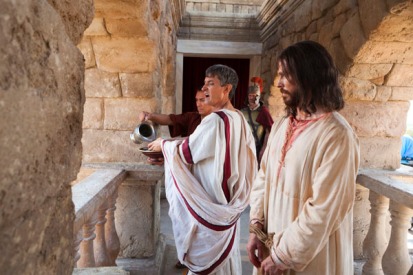Anyone who has read or heard about the proceedings leading up to Jesus’ crucifixion knows about Pilate. He was the Roman governor of Judea at the time of Jesus’ ministry and execution. After reading about him for the third time (and soon a fourth when we get to John), I began wondering what it meant to be a Roman governor, and I thought it would be interesting to research what his powers and duties would have been. So, I guess my official question question/title is: What duties and powers did a Roman governor have?
Although this seemed extremely obvious, I wanted to find a kind of general definition for Roman governors. One source defined them as senators (or knights) who ruled the provinces of the Roman empire.
As it turns out, there were more than just one type of Roman governor: (1) Proconsuls, (2) Legati Augusti pro praetore (which translates as “Representatives of the August propraetor”), and (3) Prefects.
Pontius Pilate fell into the third categorie. (When I saw that he was a prefect, I immediately imagined him at Hogwarts yelling, “10 Points from the Sanhedrin!”)
When looking up how someone became a governor/prefect, one sources noted that some governors were specifically appointed by the Emperor, but others were appointed by the consuls to act in the consuls’ absence from Rome.
This seemed a bit confusing when it came to figuring out who they had to answer to. Which ones were appointed directly by the emperor to an area? And which ones were appointed by someone who was appointed by the emperor? In hindsight, I think that they should have done a much better job about writing things like this down, so as not to confuse History majors as much.
Thankfully, amongst the confusing, one source very convieniently gave an in-depth description of a governor’s responsibilities:
Another source echoed this (in condensed form): As a Roman prefect, he was granted the power of a supreme judge, which meant that he had the sole authority to order a criminal’s execution. His duties as a prefect included such mundane tasks as tax collection and managing construction projects. But, perhaps his most crucial responsibility was that of maintaining law and order.
I think that this is the first blog that I’ve done where I did not come up with any surprising facts about what I was researching. All of the sources gave very straightforward answers as to what a governor (prefect, etc.) could do.
Something that I found very frustrating and confusing was the fact that so many of the sources used the terms “consul”, “governor”, “prefect”, etc. interchangeably, so in reading about their different duties, it was hard to keep check on which position held with powers.


